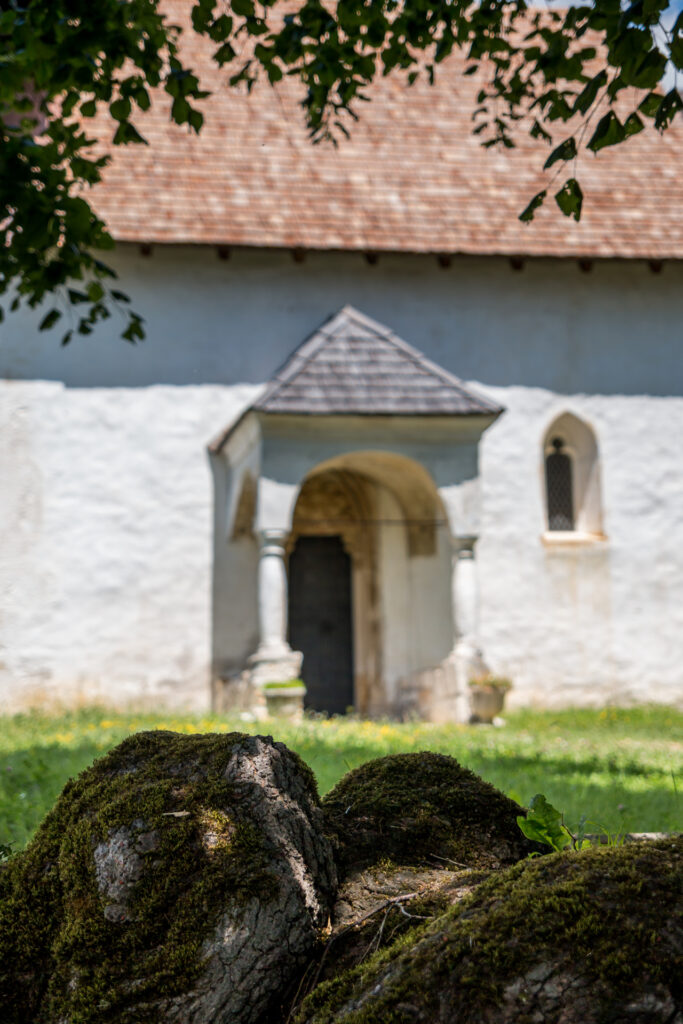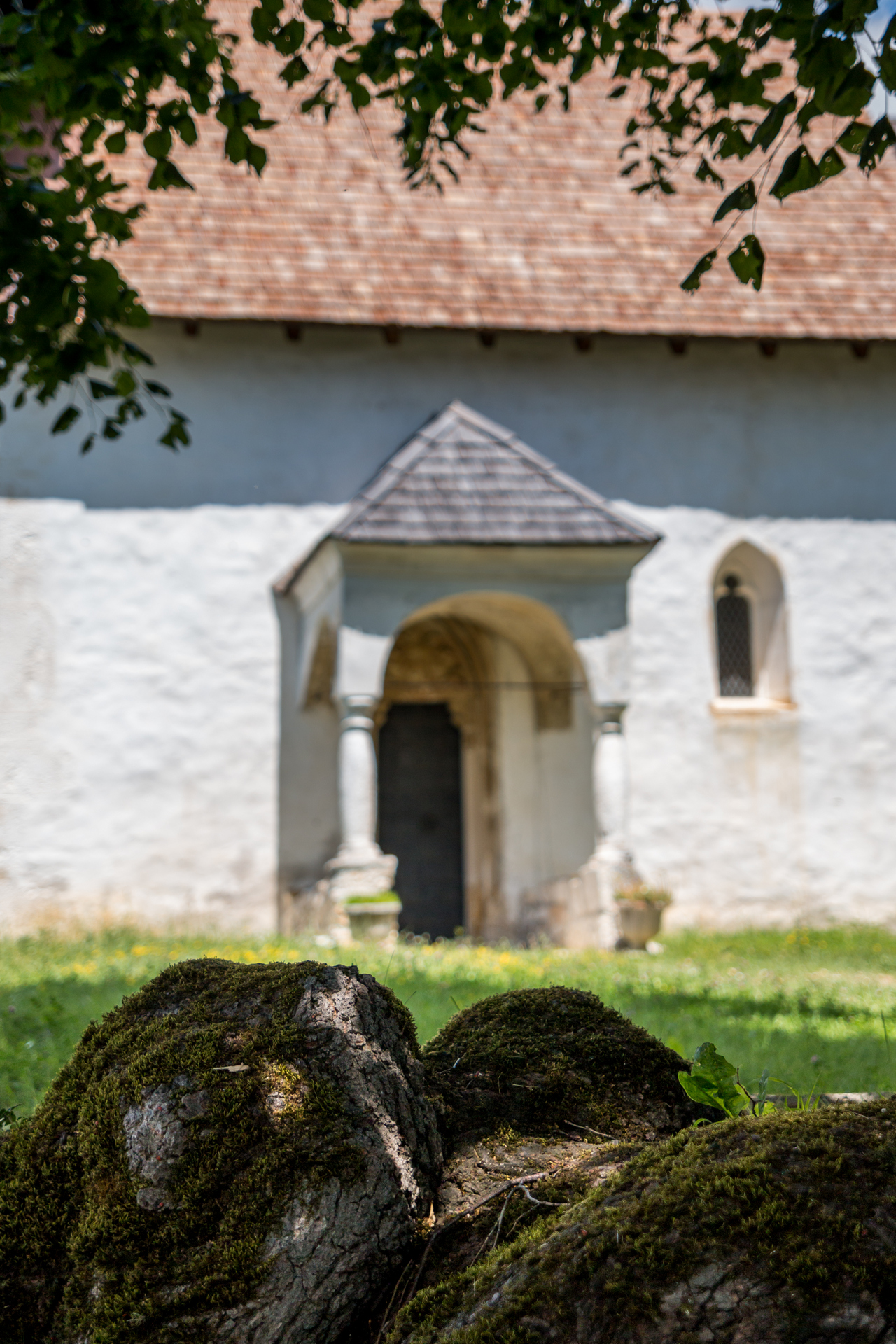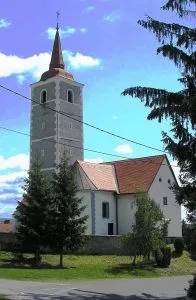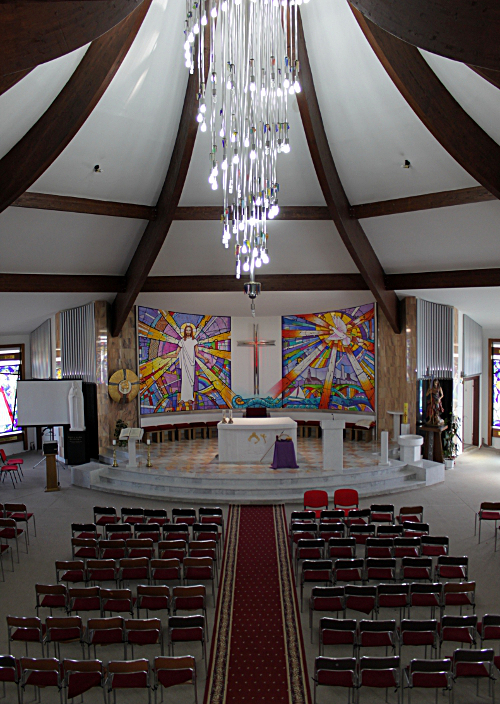The first mention of the church in Belce according to Klaić is already in 1242. in the document of Ban Dimitri, where “hominess cruciferorum de sancto Georgio” would refer to this chapel. In the 1334 census of parishes. In 2001, this chapel was mentioned as the parish church (ecclesia sancti Georgi de Belch). V. Noršić concludes that belečka parish is among the oldest in Croatian Zagorje, and in this area the church of St. Peter. St. George’s Church is the oldest Gothic building, with traces of Romanesque style on the tower. Mr. Szabo notes that this chapel is one of the most mysterious buildings in the entire Croatian Zagorje, while D. Miletić cites it as an indispensable example of the development of medieval sacral architecture in continental Croatia.
The first description of the chapel/church is from 1639. from canonical visitations, when the church had in the bell tower two bells, then four altars, a new pulpit and a choir. Around the chapel was a cemetery enclosed by a wooden fence, inside which was the chapel of St. Peter. Michael, who was already 1768. ravaged. Through the records from the visitations, it can be noted that this chapel was increasingly losing its importance, especially when it was in 1780. The church was proclaimed st. Marija Snježna, and even more so after the earthquake in which she was killed in 1880.
The Chapel of St. St. George’s Church is shaped by the following main volumes: a polygonally concluded sanctuary, a wider and higher nave and a one-storey tower bell tower. The interior is on the north side attached to the sanctuary of the sacristy. The chapel has two entrances: through the tower on the west side and the entrance on the south side, which is vaulted by a small porch on two pillars. Today, only this southern entrance is active, which was breached in the 15th century, with a richly profiled lunette on which is painted the image of the Virgin, over which is added the portico from the 17th century. On the north side of the sanctuary is the entrance to the sacristy (added in baroque) next to which there is a Gothic carved stone custody.
The wall paintings were painted in three different periods: in the sanctuary above the windows, Gothic frescoes (15th century) depicting God, Christ, the Holy Spirit and the Patroness of Theotokos were heavily damaged. Christ and St. Peter are housed in the ship. John the Baptist from the first half of the 14th century, while in the fields of the vault in the ship are paintings of lower quality from the 17th century. In the sanctuary there is a Gothic cafeteria from the mid-14th century, which once housed the Baroque altar of St. Peter. George. Today, this altar has been moved along the north wall of the nave to present a sanctuary with Gothic frescoes. On the northern wall it is possible to notice two walled semicircular passages that once connected the nave with the area of st. Catherine, built in the Baroque, which is no longer there today. The oldest part of the chapel is the Romanesque-era bell tower, which is often cited in the literature as a remnant of the former defensive fortress.
Despite the frequent opinion of the bell tower as a defensive fortress, the entrance itself with its dimensions excludes the possibility that the tower of st. George had a defensive function. The following order of construction was determined – first the ground floor of the bell tower was built, then a nave covered with a tabulata and a polygonal sanctuary was built vaulted by the Gothic cross vault, and at the end the bell tower was upgraded.
The end of 15. St. the ship of the ship is vaulted with a mesh vault supported by consoles of rustic processing in the form of human heads. In the floor of the chapel there are a total of seven tombs: one in the sanctuary (where the parish priests were buried), four in the nave and two in the bell tower. During the repair work of the floor in the 1980s, all the tombs were found emptied. D. Miletić presents the theory that the tower was originally the ossuary or karner of the Benik landowner, and this is supported by the fact that during the works in 1989. in the floor of the sanctuary along the north wall was found damaged stone sarcophagus from the period before the tatar invasion. Also, such an original purpose could be associated with a stone Romanesque fragment of relief found during works in st. Mary of the Snow.
Other examples of medieval tombs or carners are not known in continental Croatia. In addition to this remarkable discovery, st. St. George’s Church is unique because in continental Croatia it is the only one with a Romanesque façade built with regular stonemasons, and in the interior there is a series of blind arches, which is not found in any other church space. In addition to being the only one with a vaulted entire interior at the end of the Middle Ages, it also has a preserved Gothic cafeteria. In addition to these peculiarities, citing the richness of architectural plastics with figural, vegetative and geometric motifs, the Chapel of St. Peter is also mentioned. St. George’s Church in Belac is the most significant example of a medieval country parish church in Croatia.
ALTAR OF ST. JURJA
Altar of St. Peter St. George’s Church is the only preserved altar of the former four Baroque altars that were located in the chapel. Once the altar was placed on the Gothic cafeteria in the sanctuary, and now it is located along the northern wall of the nave. The altar is dated to the last decade of 17. St. According to business cards, he once had a statue of St. Peter in the middle. George between evangelists John and Mark, who stand on consoles. On top of that was attic. Over the years, the altar has been changed quite a bit: instead of the statue of St. Peter, the altar has been changed quite a bit. St. George’s painting was inserted on the canvas of St. George. George, painter of John the Baptist Ranger.
Of the entire altar, only the architecture of the lower part of the retable remained intact, so that the central part is occupied by a tabernacle with angels torchbearers. Along the outer edges of the retablo were attached decorative wings with acanthus leaves and flowers, of which today only the right wing is preserved on the altar.
According to a visit from 1708. on the attica there is a statue of the Savior between the saints Ignatius and Xaver, while according to the description of D. Baričević from 1972. on the attica was in the middle a newer picture of the Virgin Between saints Stephen and Francis Xavier. Today, there is no attic, and on the rectory are stored sculptures of the saints mentioned in the last description, as well as statues of the Apostles Peter and Paul, which obviously originate from one of the ruined altars (most likely from the altar of St. Peter). Barbara).
Pastor: Rev. Mr. Milan Pušec, manages from the parish of Konjšćina
Address: Belec 52, 49254 Belec
Phone: 049 460 040
E-mail address: zupa.belec@zg-nadbiskupija.hr
Internet address: https://www.facebook.com/ %C5%BDupa-Belec-900292200059275







